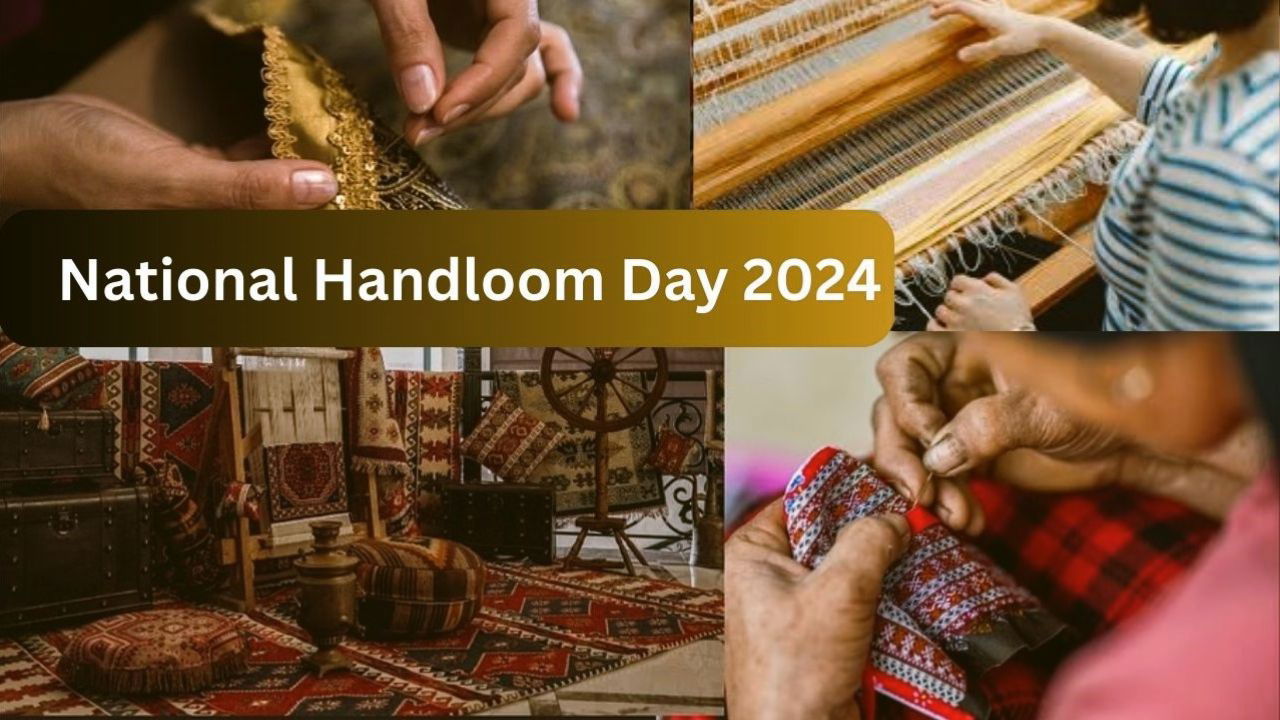
The handloom sector in India stands as one of the most significant unorganized economic activities, deeply rooted in the country's cultural heritage. The handloom industry, known for its unique hand-spinning, weaving, and printing techniques, embodies India's colourful culture and history, with skills passed down through generations in small towns and villages. This year’s National Handloom Day will be celebrated in the prominent 75 Handloom clusters/ pockets by the Weavers’ Service Centres (WSCs), in the presence of local Members of Parliament, MLAs, designers, awardees, weavers and other stakeholders with promotional activities on handlooms.
Historical Significance and Economic Impact
India's handloom industry is the largest cottage industry in the country, boasting 23.77 lakh looms and employing over 3 million people in direct and allied activities. It is also the second-largest employment provider in rural regions. The industry's historical importance is highlighted by Mahatma Gandhi's Swadeshi Movement, which promoted self-reliance and self-sustainability through the use of 'khadi'. This movement not only encouraged every Indian to spin their yarn using a simple charkha but also played a crucial role in the struggle for independence by challenging British rule and leading to the closure of mills in Manchester.
India's Handloom Heritage: A State-Wise Showcase of Traditional Weaves
-
India's rich handloom heritage is beautifully illustrated through its diverse regional weaves, each reflecting the unique cultural identity of its state. From Maharashtra's luxurious Paithani and Gujarat's intricate Bandhani to Goa's traditional Kunbi, the artistry spans across the nation. Assam is famed for its exquisite Muga silk, while Himachal Pradesh offers warm Kullu shawls.
-
Karnataka's Mysore Silk and Andhra Pradesh's detailed Kalamkari are celebrated for their quality and design. Telangana's Pochampalli Ikat, Madhya Pradesh's Chanderi, and Rajasthan's reflective Shisha embroidery add to this vibrant tapestry.
-
Tamil Nadu's Kanjeevaram and Kerala's Kasavu are renowned for their elegance. Nagaland's Naga shawls and Arunachal Pradesh's Apatani showcase northeastern craftsmanship. Bihar's Bhagalpuri silk, Chhattisgarh's Kosa silk, and Haryana's Panja Durries illustrate the diverse weaving techniques. Jharkhand's Kuchai silk, Manipur's Phanek and Puans, Odisha's Sambalpuri, and Punjab's Phulkari are integral to their respective regions.
-
Sikkim's Lepcha and Tripura's Pachra are unique to the northeastern states, while Uttar Pradesh's Chikankari, Uttarakhand's Panchachuli weave, and West Bengal's Jamdani stand out in their intricacy. Lastly, the luxurious Pashmina from Jammu and Kashmir, along with Meghalaya's Eri silk, rounds out this extensive and diverse collection of India's handloom treasures.
Government Initiatives and Modern Relevance
Post-independence, the Indian government introduced various schemes to revive and promote the handloom heritage. The Khadi and Village Industries Commission (KVIC), under the Ministry of Micro, Small, and Medium Enterprises (MSME), was established to support Khadi and village industries. The handloom sector's advantages include being less capital-intensive, eco-friendly, and adaptable to market conditions. According to the Handloom Census 2019-20, the industry employs approximately 3.5 million workers, with women constituting 72.29% of the workforce.
Export and Global Presence of Handloom Products of India
-
India's handloom products, including mats, carpets, rugs, bedsheets, cushion covers, and other articles, are highly valued in global markets. During 2022-23, the mats and mattings exported from the country had a share of 12.40% of the total exports of handloom products. Home textile constitutes over 60% of India's total handloom exports. In 2022-23 the export of carpets, rugs and carpeting accounted for Rs. 784.93 crore (USD 97.95 million). During 2022-23, the cotton durries exports were valued at Rs. 1,159.41 crore (USD 144.61 million).
-
Indian silk scarves are also popular worldwide. These handloom-made products form a sizable chunk of the total handloom exports during 2022-23 and accounted for Rs. 106.06 crore (USD 13.2 million). Major export centers like Karur, Panipat, Varanasi, and Kannur produce a variety of handloom products for international markets, exporting to over 20 countries, including the US, UK, Spain, Australia, and Germany. The US remains the largest importer of Indian handloom products.
Handloom Sector: Challenges & Future Prospects
Despite its rich heritage, the handloom sector faces several challenges, including low productivity, globalization pressures, insufficient working capital, and rapid technological advancements. However, the industry's minimal environmental impact and scope for newcomers offer significant opportunities. Balancing cultural heritage with modern technology is crucial for the sector's survival and prosperity. Read in Detail
Activities Scheduled on MyGov Portal:
-
Handloom Quiz contest: to be hosted from August 7th to 10th, 2024
-
Pledge to use Indian Handloom: LIVE from July 16th to August 15th, 2024 at https://pledge.mygov.in/indian-handloom-2024/
-
Selfie contest : Selfie with Indian Handloom--live from July 16th to August 15th, 2024 at https://www.mygov.in/task/selfie-indian-handloom/
-
Designing a Souvenir: Design a Handloom Souvenir- LIVE from July 16th to August 15th, 2024 at https://www.mygov.in/task/design-handloom-souvenir/
India's handloom industry, through its originality and craftsmanship, plays a vital role in the country's soft power. Initiatives like 'Saree' and 'Khadi' diplomacy showcase the mastery of Indian weavers on the global stage, enhancing India's attractiveness as an investment destination. The future success of India's handlooms will depend on leveraging these strengths in an increasingly multipolar world.
















